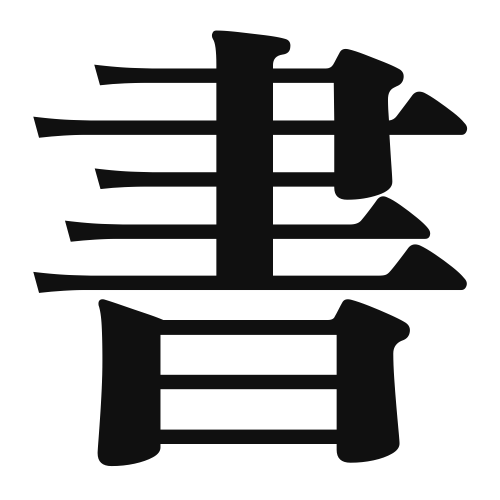1. Overview of Meaning
The kanji “書” (pronounced “sho” in Japanese) means “to write” or “writing.” It encompasses the act of recording information, thoughts, or stories on a medium, typically paper.
2. Formation and Radical
The kanji “書” is a compound character that combines elements to convey its meaning. It is classified as a 形声文字 (keisei moji), which means it is formed by a phonetic component and a semantic component. The left part, “者” (sha), indicates a person or agent, while the right part, “書,” relates to writing.
The radical of “書” is “言” (gen), which means “word” or “speech,” highlighting its connection to language and communication.
3. Examples of Usage
Common words and phrases that include “書” are:
- 書籍 (shoseki) – books
- 書道 (shodō) – calligraphy
- 書く (kaku) – to write
Example sentences in daily conversation:
- 私は毎日日記を書きます。 (Watashi wa mainichi nikki o kakimasu.) – I write in my diary every day.
- この書籍はとても面白いです。 (Kono shoseki wa totemo omoshiroi desu.) – This book is very interesting.
4. Synonyms and Antonyms
Similar kanji with related meanings include:
- 記 (ki) – to record, which emphasizes the act of documenting information.
- 筆 (fude) – brush or pen, which refers to the tools used for writing.
Antonyms include:
- 消 (shō) – to erase, which means to remove written content.
5. Cultural and Historical Background
The kanji “書” is deeply rooted in Japanese culture, where writing is considered an art form, especially in practices like 書道 (shodō) or calligraphy. This art emphasizes the beauty of brush strokes and the expression of one’s personality through writing.
Proverbs and idiomatic expressions related to “書” include:
- 書は人なり (Sho wa hito nari) – “Writing reflects the person,” indicating that one’s writing style reveals their character.
